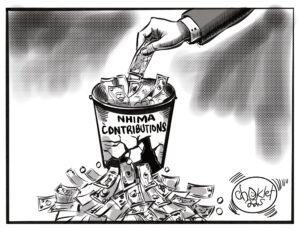Barclays Bank Zambia managing director Mizinga Melu says the bank cannot reduce interest rates as fast as customers would want because the Non-Performing Loans (NPL) ratio remains high.
Melu explained that while there was reason for optimism that lending rates on loan facilities would eventually reduce, there was need for consumers to understand that the high NPL ratio, presently above the acceptable 10 per cent threshold, wass preventing interest rates from reducing fast enough.
She also noted that late repayments on loans were a key factor in maintaining a high NPL ratio.
“It’s important for clients to understand the standards because they are paying back. I think there is a lot of financial literacy that needs to go on in the market as we are working on how do we reduce the Non-Performing Loans because Non-Performing Loans come up when customers pay late. So, their heart is in the right place, they want to pay [back], but they pay late so how do we help them?” Melu narrated in an interview with News Diggers!
“The Non-Performing Loans, I think we saw a time when they were quite high. But the central bank has continued to be concerned about the Non-Performing Loans. I think right now, from an industry point of view, they are sitting on maybe about 11 per cent, or 12 per cent, that’s the industry level. And the central bank has confirmed that they are concerned about that, and the Bankers Association [of Zambia] is concerned about that. So, for me I think it’s about, as the economy continues to improve, you will see the Non-Performing Loans continue to go down.”
Melu added that Barclays is striving to ensure that the cost of credit does reduce in line with Bank of Zambia’s Monetary Policy Rate (MPR) and Statutory Reserve Ratio (SRR).
“I think the Monetary Policy [Rate] in this country is very positive because the central bank has continued to reduce its interest rates. So, right now, when you look at its Monetary Policy Rate, we are at 9.75 per cent so we are in a good place. Having said that, we also have to take into consideration that each client is different. We have reduced our rates and we have continued to reduce our rates from a few years ago in 2016 when we had the liquidity crisis when the interest rates were about 30 per cent to where we are now. So, in terms of where we are now, we have broadly reduced the rates. But it’s important to say that, each client we have to take the different risk factors into consideration,” explained Melu.
“One of the big factors we have to take into consideration is IFRS (International Financial Reporting Standards). I think we need to do more as banks to educate the public on IFRS because IRFS, the new accounting standards, enhance the risk factors in the way we assess our risks. It’s not like what we used to do before. So, there are other factors that we are taking into consideration, but as we are doing that, it’s important to note that the interest rates for Barclays have been coming down. Each client is different, each segment is different, and the conversations we have with each client are different, but the rates are coming down. Are they coming down as fast as we would want them to be? There are other factors that we will continue to take into consideration. And we will continue to work towards that. But there is a lot of liquidity in the market if you look at Statutory Reserve Ratio going to 5 per cent, we have no choice but to reduce our rates because now we have extra liquidity. So, the Monetary Policy is positive. Our key driver is not government, but the Monetary Policy and as of now, it is very positive, and we have to respond to that.”
Earlier this month, the Bankers Association of Zambia (BAZ) through chief executive officer Leonard Mwanza also outlined that the cost of borrowing has been exacerbated by the government’s own action through its incessant borrowing on the domestic market that is sustaining higher interest rates for average lenders.
He observed high NPLs ratios prevailing in the market were keeping interest rates on loan facilities high, adding that lowering of lending rates, which remain above an average 20 per cent for most credit facilities, was equally dependent on how much government decided to borrow via government securities.























